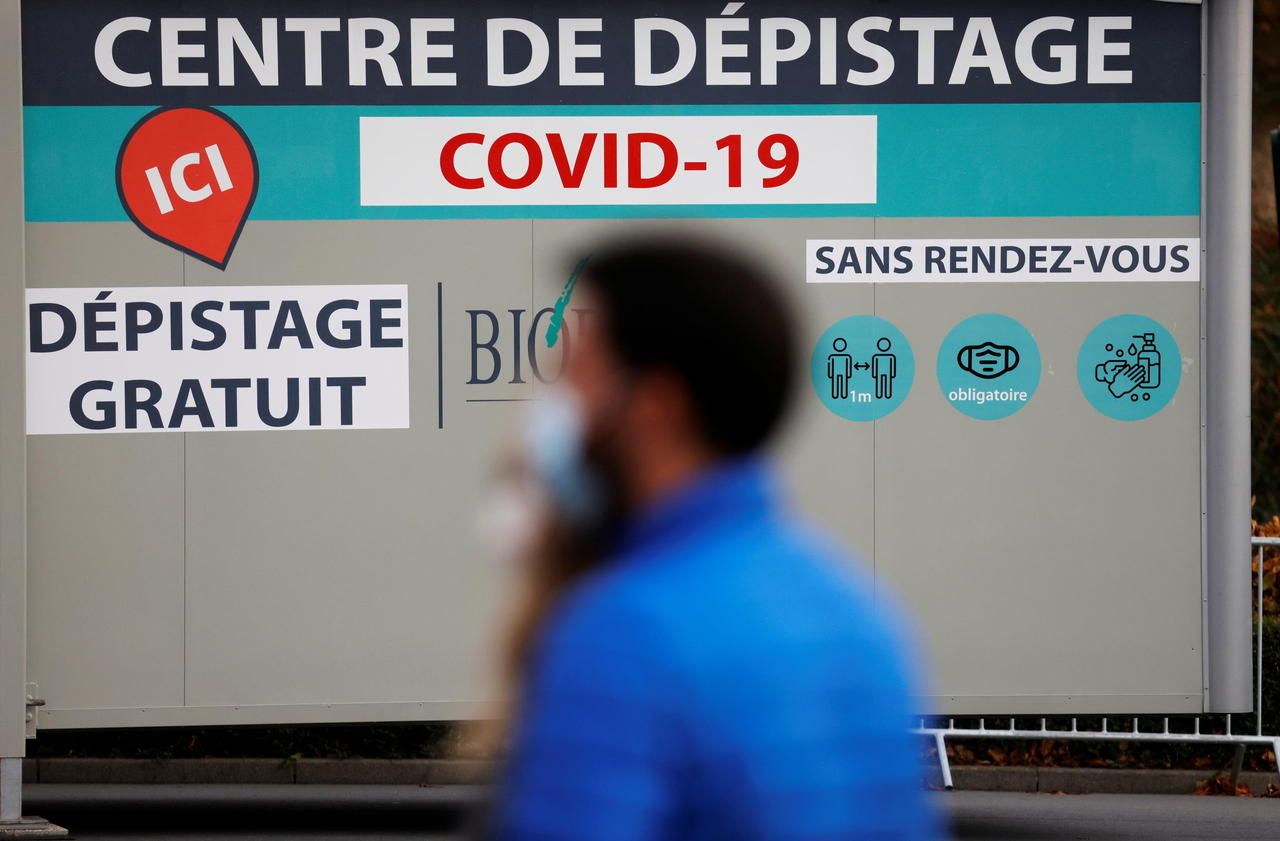50,000, 80,000, 100,000?
The mystery remains on the real number of new infections with the coronavirus SARS-CoV-2 per day in France.
One certainty: it obviously exceeds that of the Covid-19 cases identified, since not all infected people are tested.
“We are in a very difficult, even critical, situation.
There are probably more than 50,000 cases per day, it is estimated that we are rather around 100,000 cases per day, twice as many, ”said Jean-François Delfraissy, the president of the scientific council, on RTL on Monday.
#Coronavirus - "A difficult, even critical situation: an estimated 100,000 daily positive cases, we have been surprised at this brutality for 10 days", specifies the President of the Scientific Council, Jean-François Delfraissy, guest of #RTLMatin with @BSportouch pic .twitter.com / CMgXmDR4JD
- RTL France (@RTLFrance) October 26, 2020
The number of new cases identified every 24 hours actually varies from day to day: 52,010 Sunday, but only 26,771 this Monday, for example.
These very important differences can be explained by the fact that many laboratories are closed on weekends.
This is why the Monday figure (which takes into account the tests reported in the system in 24 hours from Sunday to Monday and carried out the previous days) is always the lowest of the week.
On a weekly average, there are currently around 36,000 new cases per day.
READ ALSO>
New daily cases of Covid-19: why so many deviations from day to day?
“The difficulty is that we have a sampling problem, because we do not detect all cases.
But we do not know the proportion of screened people nor that of those we miss, ”points out Samuel Alizon, researcher at the CNRS, referring in particular to asymptomatic patients who can pass through the mesh of screening.
Case fatality rate
One way to remedy this is to look at the case fatality rate of the virus, which is the percentage of infected people who die from it.
“By taking the deaths into account, we know that we will have an exhaustive sample.
So we solve the sampling problem, ”emphasizes Samuel Alizon.
The Institut Pasteur evaluated this “Infection fatality rate (IFR)” at 0.53%, in a study published in Science in the spring and updated in June.
With an average delay of three weeks between infection and death, we can roughly reconstruct the curve of cases starting from that of deaths, with three weeks difference.
Taking into account the margin of error as well as the probability of going into intensive care, the Institut Pasteur estimated the real number of cases between 180,000 and 490,000 during the peak of the first wave, in mid-March.
That is to say between 200 and 500 times more than the real number of cases recorded per day on average at that time… when one tested very few people.
LP Infographic
The scientific council estimates for its part, in its "alert note" of September 22, that the peak was located around 280,000 contaminations on March 28.
As for the modeling team of the epidemiology and the evolution of infectious diseases at the University of Montpellier, which was based on a higher case fatality rate (around 0.8%), it succeeded, logically, at an even lower estimate, around 130,000 cases.
Newsletter - Most of the news
Every morning, the news seen by Le Parisien
I'm registering
Your email address is collected by Le Parisien to enable you to receive our news and commercial offers.
Learn more
However, this estimation method is itself subject to a large margin of error.
On the one hand, the case fatality rate varies not only according to age, but also over time and progress in the management of patients.
It would have decreased by about 13% in six months.
On the other hand, this method "assumes that the time between contamination and death is the same for everyone, which is very far from being the case", notes Mircea T. Sofonea, lecturer in epidemiology at the 'University of Montpellier.
“This method can be interesting but with a lag of at least three weeks, which loses interest when the dynamics of the epidemic is very rapid, as currently,” he adds.
Range between 56,000 and 89,000 daily infections
The modeler has designed a model "a little thinner than a simple Excel spreadsheet and which tries to approach how the epidemic is really spreading and to account for its dynamics".
Several parameters were taken into account: the probability of being infected, entering a hospital, being admitted to intensive care, dying, etc., depending on age.
By then integrating, in this model, an estimate of the number of reproduction "R" (that is to say the number of people that an infected individual will infect on average), one arrives at an estimate of the real number of cases. on day J.
READ ALSO>
Coronavirus: what proportion of deaths?
The case fatality puzzle
Having reworked the figures once again this Monday evening, Mircea T. Sofonea resulted in an estimate of 69,000 new daily cases (between 56,000 and 89,000 with the margin of uncertainty).
This is a little below Professor Delfraissy's estimate, and corresponding to roughly double the average number of contaminations detected each day.
Based on data on shifts and deaths # COVID19france on October 26 (so before the curfews), the team (@MT_Sofonea) estimates:
R (t) = 1.25 [1.20-1.30]
currently population infected = 0.9 [0.8-1.2]%
infections per day = 69,000 [56,000-89,000] https://t.co/kPqNFUR8HE thread 1/8
- ETE Fr (@ete_fr) October 27, 2020

